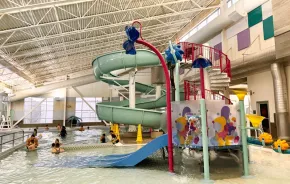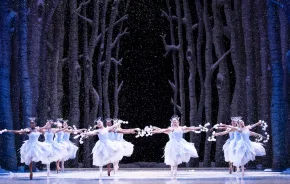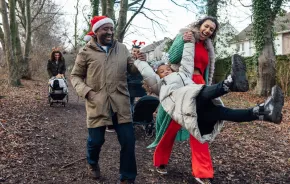
Photo:
Credit: Lucinda Roanoke
Editor's note: This article was sponsored by the School of Acrobatic Arts & New Circus Arts.
People may love watching circus artists perform because their stunts seem impossible to master, but learning circus arts is possible for everybody, says Maia LeDoux, design and marketing manager at South Seattle’s SANCA, the School of Acrobatic Arts & New Circus Arts.
“We like to say circus is for ‘every body,’” says LeDoux, who notes a SANCA student with spina bifida practices trampoline arts and juggling. “The only reason someone wouldn’t be able to learn how to do something is if they’re in a place of not wanting to do it. And that’s okay, too. During my own daughter’s circus summer camp flying trapeze activity, her success one day was climbing all the way up the ladder and then deciding she wasn’t ready to fly.”
But how can “every body” learn how to do something as magnificent as the flying trapeze in just one week? LeDoux says that practicing circus arts is a non-competitive endeavor, in general, honed by a guiding principal to have fun while learning the steps necessary to grasp a new skill.
“Our instructors in the School of Flight flying trapeze tent say, ‘You don’t have to fly, you get to fly.’ From the very beginning, kids and adults learn they get to do things, but no one is going to make you do anything,” says LeDoux. “The language used is important, and so is celebrating every step taken on the way to learning how to fly trapeze, or juggle with three balls, or unicycle with no assistance.”
This non-competitive circus arts atmosphere helps participants face their fears in the moment. Local parent Angela Goodwin experienced the benefits of taking on new challenges during a two-hour flying trapeze class. She attended the class with a group of her mom friends who were looking to step out of their usual get-together routine.
“A couple of people were afraid of heights, so it was a pretty intense two hours. Everybody flew on the trapeze. They were scared, but they did it; it was awesome,” says Goodwin. “Flying is like jumping off the high dive. It looks so much higher from up there. It’s super scary to take the first step off the platform onto the trapeze, but once you let go and are flying, it’s exhilarating.”
For kids who might not excel at team sports, circus arts can provide a chance to find their ‘thing’ while working on so many components of physicality.

Learning new amazing feats leads not only to joy, but participants also gain positive self-regard and confidence that both helps them in class and carries over into the real world. “No one student is shown as an example for everyone else, and there’s no discussion of what level a student should be at right now. Every person moves at their own speed,” says LeDoux, who notes that students often take classes more than once. “If last session you were able to do a forward roll, maybe your goal this time is to do a dive forward roll.”
Another reason circus is for “every body” is that there are so many types of circus arts. In a circus arts class, students try tumbling, wire walking, juggling, trampoline, rolling globe, aerial arts and acrobatics. “For kids who might not excel at team sports, circus arts can provide a chance to find their ‘thing’ while working on so many components of physicality. Maybe they’ll find out that the mind-hand component of juggling works for them, or they’ll fall in love with unicycling or wire-walking, thanks to their strong core,” says LeDoux.
While all of SANCA’s classes promote agency through the mastering of difficult tasks, the classes under their Social Circus umbrella are designed to promote social and emotional learning (SEL) skills, too. These include:
- Every Body’s Circus program, which offers individual lessons, group lessons, classes with inclusion and camps that benefit children and adults with physical, developmental and/or socio-emotional difficulties;
- An Outreach program that partners with community organizations that work with underserved youth populations to provide circus arts education;
- Roda, a youth development program in partnership with the Boys & Girls Club of Rainier Valley that emphasizes personal and social growth and job readiness;
- Transformational Women’s Circus, which uses circus arts, group drama therapy and social science research to support the mental health and trauma recovery of female-identifying adults.
A recent national study that included SANCA showed that youth in these Social Circus classes made substantial progress in the development of SEL skills. For example, youth struggling to demonstrate self-regulatory skills improved from 19 percent at the beginning of the program to 53 percent by the end of the program.
A real-life example of the benefits of circus arts classes is Melvin Diggs, a graduate of St. Louis’ Circus Harmony who is currently touring with Cirque du Soleil. Diggs says he grew up expecting to be part of a gang, but instead found somewhere to belong through circus arts. “Circus didn’t change my life — it saved my life,” says Diggs.
On a smaller scale, LeDoux says her former job as a SANCA receptionist taught her that circus arts classes change moods for the better every day. “I’d say hello and goodbye to everyone walking through our doors. I’ve seen again and again that circus arts make people feel good,” she says. “The only people who didn’t leave happy were preschoolers who were sad that circus class had to end.”
|
Sponsored by: |
 |











